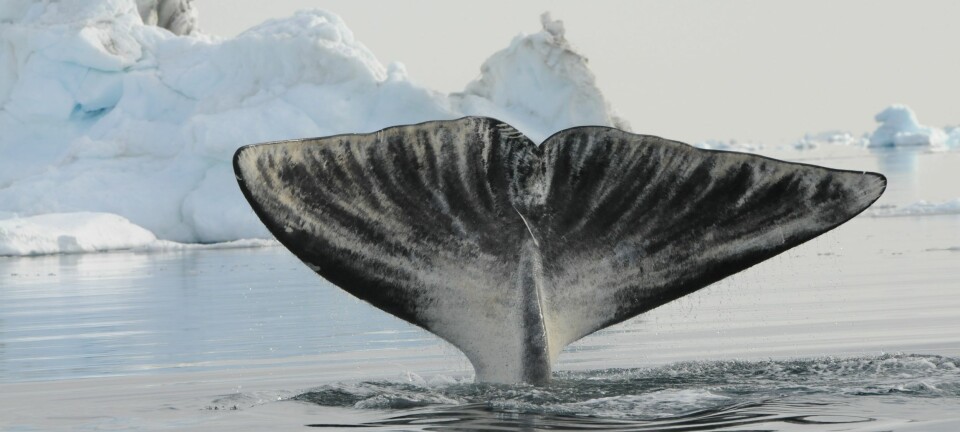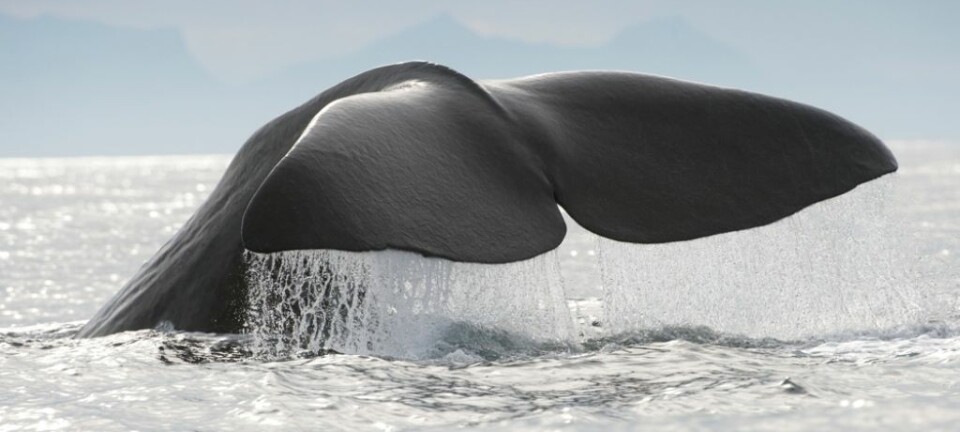An article from Norwegian SciTech News at NTNU
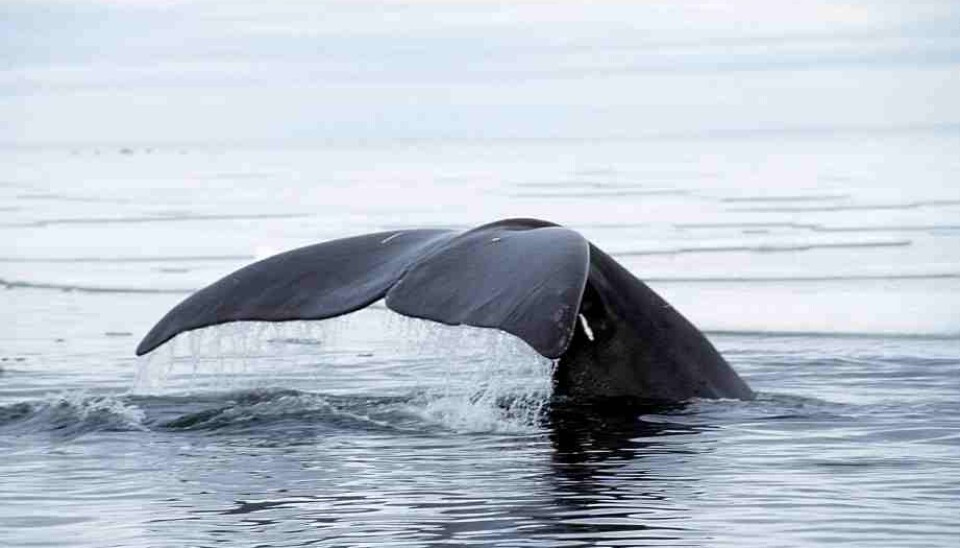
The importance of sound for bowhead whales
Whales can have a tough time in the Arctic. Pollution, shipping traffic and offshore development can all pose problems in different ways. Researchers believe that also sound can have an impact.
Denne artikkelen er over ti år gammel og kan inneholde utdatert informasjon.
The last time researchers listened in on bowhead whales in the arctic waters off northeast Greenland in 2009, they were stunned to discover great number and variety of songs the giant mammals sing. Understanding the acoustic environment in the Arctic is important for these rare whales, especially in the face of potential development.
Whales are especially sensitive, because they rely heavily on sound to interact with each other and their environment.
And the way that sound travels in Arctic waters can be complicated, because for much of the year a cap of ice can cover the ocean.
"There is very little knowledge on how sound propagates in ice-covered waters," says Michel André, an acoustician from the Technical University of Catalonia in Spain, who was one of five marine mammal scientists who spent two weeks in August, 2013 in the Fram Strait, on the Swedish icebreaker Oden.
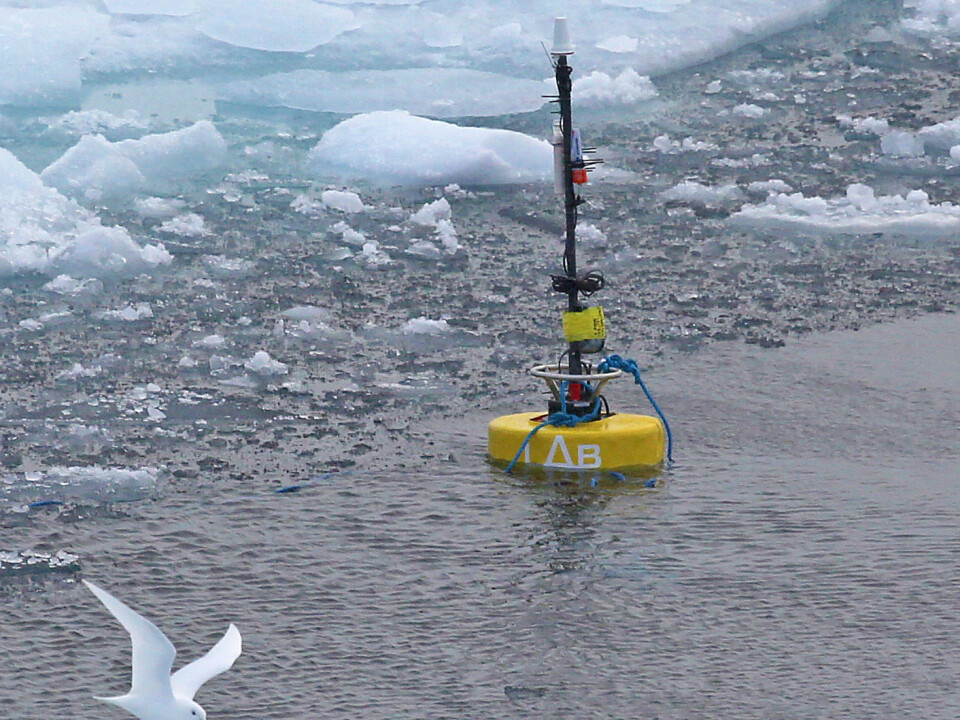
The cruise was coordinated by the Norwegian University of Science and Technology's Sustainable Arctic Marine and Coastal Technology (SAMCoT) programme and sponsored by Statoil, with the goal of collecting data that will help make future development in the Arctic safer and sustainable.
The marine mammal group conducted acoustic research and combined conventional marine mammal observations with more high-tech approaches. Their work will help fill in the gaps of what is known about the acoustic environment in the Arctic.
Salinity and temperature affect sound
André says the peculiar conditions of the Arctic Ocean water column, such as changes in salinity and temperature, may allow for sound to propagate much further in the Arctic than in temperate waters.
"In other latitudes, sound would be absorbed faster," he said. "In the Arctic the same sources could still be perceived at much greater distances.”
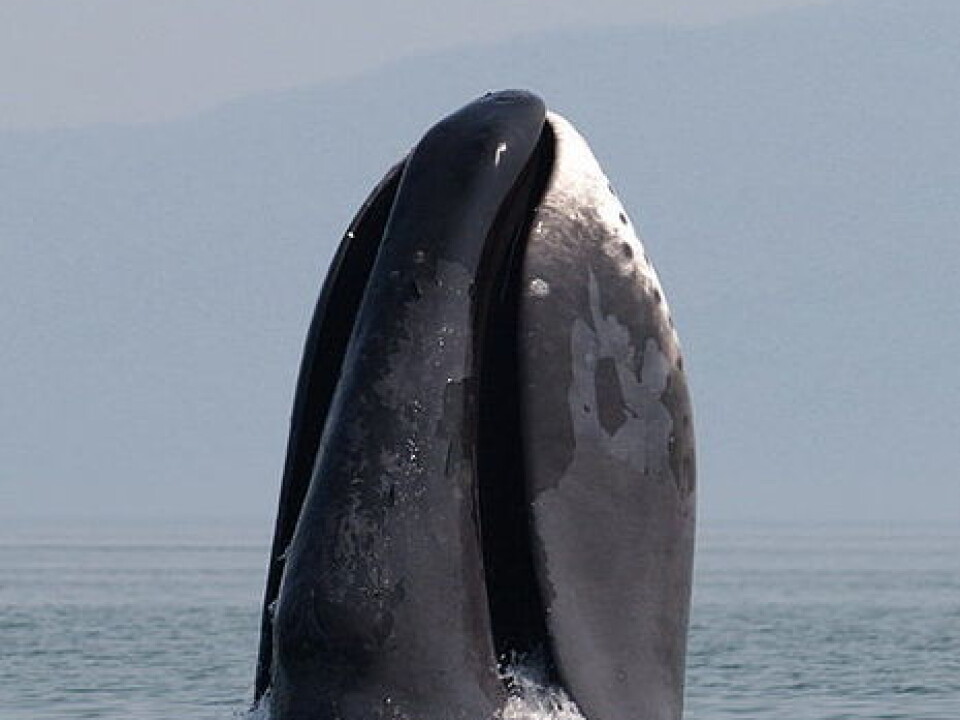
Some experts believe that bowheads take advantage of Arctic acoustic conditions to communicate with each other over distances of up to 100 km.
But add anthropogenic noise to the equation and the same properties that amplify bowhead sounds could also exacerbate noise pollution. The bowheads’ ability to communicate could be significantly compromised.
A small but vocal population
The marine mammal observers, led by Jan Durnick, from Marine Observers in Denmark, and including Jürgen Weissenburger, a biologist from Statoil, Scott Sorensen from the University of Delaware, Andy Mahoney from the University of Alaska, as well as André, spotted 3 bowheads belonging to the Spitsbergen population during the Oden cruise.
Few knew the significance of these rare sightings better than Durnick, who also participated in one of the previous survey of the area
“Between 2006 and 2008 only 17 bowheads have been seen off East Greenland,” the researchers reported, “so even our few observations make a significant contribution to the knowledge about their distribution and abundance.”
While the International Whaling Commission has no good estimate for the size of this critically endangered population, some scientists speculate it numbers in the tens.
Big, old and noisy
Bowheads differ from other whale species in a number of ways.
They live longer than any mammal – sometimes over 200 years – and spend the entire time in the Arctic Ocean. A fully grown whale can reach up to 18.5 meters long and weigh 90 tonnes – that’s about as long as an articulated bus, but more than four times heavier.
In spite of their terrific size, life is not easy for these arctic leviathans.
Through months of near-complete darkness bowheads must navigate beneath thick ice to find cracks, fissures and polyneas, or areas of permanently open water, where they can breathe, all the while living off of dwindling fat reserves accumulated during summer feeding.
They are believed to use sound to maintain contact with each other, as a navigational tool, and in the mating process. Bowheads are particularly vocal during the mating season, at which point their simple grunts and squeals often assume a highly complex arrangement known as a song.
An unlikely place for singing
In spite of engine and ice-breaking noise from the Oden cruise, the researchers were able to record narwhals close to the ship. But the real gold will come from two recorders left behind at 200 m deep, which will have ample opportunity to capture the many subtleties of bowhead whale song until they are retrieved in during a future cruise.
In general, bowhead whale songs are made up of a pattern of notes that usually lasts about a minute, but any given song may be repeated again and again for hours.
These sounds may range from a hair-raising screech to a deep, guttural grunt, and often bear more resemblance to a dubstep track than a bird’s song.
A vocal population
A recent study, conducted in part by researchers at the Norwegian Polar Institute and the University of Oslo, reported that the Fram Strait population of bowheads, though small, sings more songs than any other. A number of floating recorders deployed on an earlier cruise captured more than 60 unique songs between November 2008 and April 2009.
The authors made it clear that these findings have fundamentally changed the understanding of bowhead acoustic behavior and emphasize the importance of the western Fram Strait as a potential wintering ground for this critically endangered population.
Traditionally singing in whales is thought to relate to mating behavior. The males with the loudest or most complicated serenades are the most desirable suitors.
New technology and survey efforts, however, have revealed that this view is likely an oversimplification.
Researchers are recording more and more singing outside of the known mating season, and can only speculate about the ecological significance of these songs. André thinks some answers may lie within the recorders deployed by Oden.
The next step
The amount of data is daunting. André and his lab will have thousands of hours of continuous audio recorded from beneath the ice. Using sophisticated sound-analysis software, they will try to model the relationships between sound propagation and the physical properties of the water column, such as salinity or temperature.
The preliminary analysis has revealed, as André suspected, that these relationships are very complicated. They are continuing to work through the data, but André already has the next step in mind.
“Further experiments must involve the use of controlled sources – such as source level, frequency composition, etc. – to be able to recreate their acoustic pathway under the ice, combine this data with the acoustic properties of the local marine mammal species hearing system, and finally create models able to predict – and hopefully correct – potential negative effects.”







